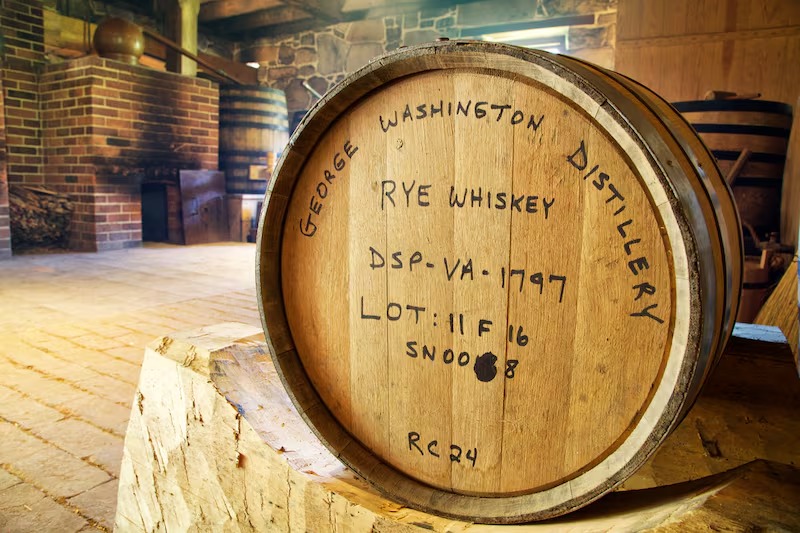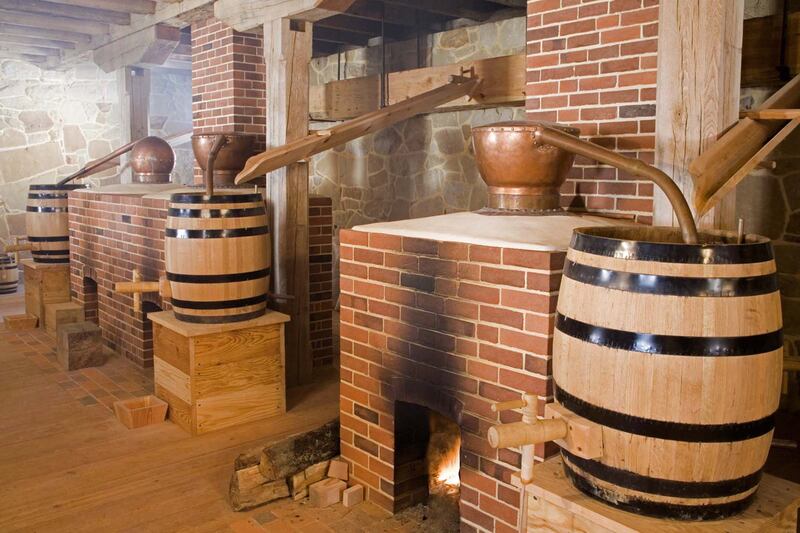George Washington is trying to get my attention from across the bar. It’s almost like he wants me to order more rye whiskey.
No, this isn’t the beginning of a lost Hunter S. Thompson story. It actually happened to me.
But why would George care what I drink?

It all transpired on a recent afternoon at The New York Distilling Company in Williamsburg, where I was sampling the company’s new and deliciously rich Ragtime Rye, which will be available on September 1.
Attached to the distillery is its watering hole, The Shanty, and behind the industrial-hip bar top are shelves holding the establishment’s wide array of liquor, as well as a photo of a wise George Washington.
What’s he doing in the heart of hipster Brooklyn? Not only was Washington a real patriot, war hero and the first commander-and-chief, but after his presidency he owned the U.S.’s biggest rye whiskey distillery on his Mount Vernon estate in Virginia. That fact alone makes him the patron president of the recent rebirth of rye whiskey and an icon for a new generation of distillers.
Washington was already a very successful and progressive farmer; he developed a number of innovations, including a 16-sided barn meant to revolutionize grain processing.
In the 1790s, his Scottish plantation manager, James Anderson, came up with an idea to use some of the farm’s rye for whiskey, since it would be a way to store the grain longer and increase its value significantly.
I imagine it wasn’t hard to sell Washington on the proposition considering people drank a lot in those days. No, life wasn’t a perpetual party back then. But water wasn’t often potable and spirits, beer, cider and wine were much safer choices.
There are no records of the conversations between Washington and Anderson, though I hope they were held over a stiff concoction.
What we do know is that the two constructed a pair of stills in 1797 for a trial run, and it went well enough that they soon built a 2,250-square-foot distillery with five copper pot stills. By 1799 the facility made 11,000 gallons of whiskey and a $7,500 profit.
It’s quite ironic that Washington became a distiller, since a few years earlier during his presidency he had to deal with the Whiskey Rebellion, a short-lived period in the early 1790s when distillers in Pennsylvania refused to pay the new tax on spirits.

For my new book, The Art of American Whiskey, I was able to track down an image of Washington’s original distillery ledger, which shows not only how much alcohol they produced, but also how much tax they paid.
Washington died unexpectedly in 1799 just a few months after his distillery was completed and it soon was abandoned. (One reason for its demise might be that Martha, his dutiful wife, freed many of the family’s slaves in the year following her husband’s death, significantly shrinking the estate’s work force.)
Up until a few years ago there was no trace of it and few people knew about the first president’s whiskey business.
Fortunately, with the support of the Distilled Spirits Council of the United States, the distillery was reconstructed from the ground up in 2006 and is now used to make liquor several times a year. Thanks to the surge in popularity of straight rye whiskey over the last few years, there has been renewed interest in Washington and his whiskey.
But George isn’t the only Washington to be connected to an alcoholic beverage. Martha was known to offer visitors to Mount Vernon a rum punch. Why not a rye cocktail? Rum was actually America’s original spirit of choice and for a time there were plenty of distilleries producing it along the Northeast coast.
While Martha Washington Punch occasionally shows up on bar menus, according to Mount Vernon, the first first lady’s personal recipe was unfortunately never written down.
But given that it was probably a mix of rum, spices and fruit juice, I asked Allen Katz, co-founder of the aforementioned New York Distilling Company, to come up with his version of Martha Washington Punch.
After a few cups of it you might just start dreaming about opening your own distillery. Cheers!
Martha Washington Punch
Contributed by Allen Katz
Ingredients12 oz Plantation Original Dark Rum9 oz Chairman’s Reserve Spiced Rum6 oz Royal Combier Grande Liqueur9 oz Fresh lemon juice8 oz Cinnamon Syrup*6-10 oz Chilled seltzerGarnish: Lemon and orange wheels and freshly grated nutmeg
DirectionsCombine all the ingredients except the seltzer in a container, cover and refrigerate for a few hours. Once the mixture is well chilled, pour into a punch bowl and add a large block of ice. Top with 6 to 10 ounces of chilled seltzer (less if you like it a little stronger, more if you like it a little weaker). Garnish with thin lemon and orange wheels and a light dusting of freshly grated nutmeg.
*Cinnamon SyrupIngredients2 cups Water2 cups Sugar3 Cinnamon sticks
DirectionsAdd the sugar and water to a pot and simmer over low heat. Stir to dissolve the sugar. Add 3 cinnamon sticks and continue stirring until all the sugar has dissolved.
Once the syrup is reasonably cool transfer to a quart container, cover, and let stand at room temperature overnight.
The next day, strain the finished cinnamon syrup into a clean container and discard the used cinnamon sticks.






